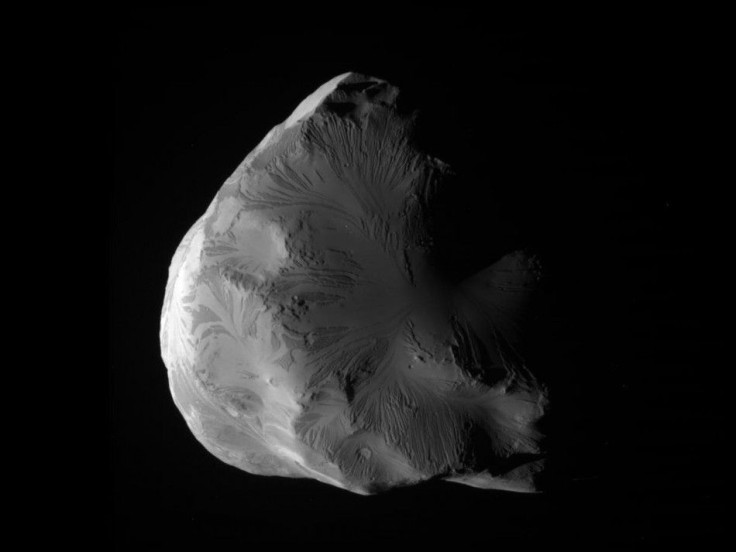Saturn moons may hold potential life: Cassini NASA Helene close encounter

As NASA's Cassini project relayed images back after snapping photos of several of Saturn's 60 known moons. The images revealed lakes and rivers filled with liquid methane on Titan, Rhea with an atmosphere full of oxygen, and an ocean-like surface under a thick hydrocarbon atmosphere. The signs of water molecules and oxygen have given rise to much speculation about life form existing on Saturn moons.
Cassini passed by Helene in its second closest encounter with the moon in history at 4,330 miles. Photos reveal Helene having an abnormal shape. It's lack of a gravitational field contributes to the oddly shaped body, not the round moon that you would typically expect. The result is a bumpy surface with one side that is filled with craters, pits, and gullies, while the other side appears smooth with possibly dust layers. Helene orbits around Saturn at over 234,500 miles and measures in at 36 by 32 by 30 kilometers, which is considered one of the smaller moons.
Helene, one of the known four Trojan moons, co-orbits Saturn along with Dione and Polydeuces, all at around 60 degrees front and behind. The name Helene was given after the Helen of Troy found in Greek mythology. The Trojan moons avoid collision even though it shares the orbit with larger objects due to its orbit around a Lagrangian, or Trojan point, of stability.
The recent imagery will help NASA develop a map of Helene, detailing its gullies, craters, and smooth surfaces for future research. Though the findings of Helene may contrast with the properties described on Titan and Rhea, the probability of life existing is not completely ruled out.
© Copyright IBTimes 2024. All rights reserved.





















